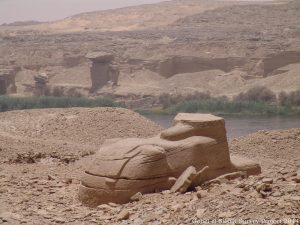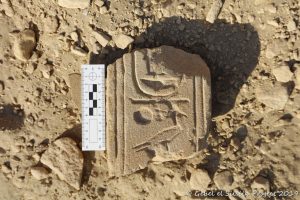Identity of Aswan
Aswan Governorate is the southernmost governorate of Egypt. It is located in the Upper Egypt region. Aswan is the main city of this governorate. Throughout the year, a number of tourists visit this region. Because it has a number of archaeological remains that speak about the ancient Egyptian culture. This city is a part of the UNESCO Creative Cities Network. as the craft and the folk art of Aswan are famous.
About the Discovery
This recent discovery took place at the site of Gebel El-Silsila in this Aswan region. This discovery is the outcome of the collaborative team of Egyptian and Swedish archaeological mission. Maria Nilsson and John Ward from Lund University led this mission.
The archaeologists unearthed a sandstone workshop in the site. It belongs to the time period os the New Kingdom. This discovery is very important. Because any workshop remains are helpful to understand the manufacturing process of the material.

Importance of the discovery
This discovery instantly gained its importance. It set up a ground of researching on how the ancient artisans made the decorative items of temples and burials. Thus this discovery attracted instant international recognition in the field of academic research.
The significant artifacts
During excavation, archaeologists unearthed a number of artifacts. These artifacts are significant. Because they reflect the skills of ancient artisans.

Different types of Sphinxes
These artifacts include a sizable criosphinx, a ram-headed sphinx etc They are carved in such a style that is similar to the criosphinxes to the south of the Koshnsu Temple at Karnak. The newly-discovered relic dates back to the time period of Amenhotep III. This pharaoh ruled during the 18th Dynasty. The criosphinx measures 5 meters in length, 1.5 meters in width, and 3.5 meters in height. Archaeologists also found a smaller version of the same type of sphinx. It has been assumed that it was the work of probably a new artisan who just joined the work.
Other discoveries
Archaeologists also found a variety of other precious artifacts both finished and unfinished. They include a rough-cut uraeus, a coiled cobra, a blank and round-top Stella etc. The coiled cobra was bound to crown the head of the larger criosphinx. Archaeologists recovered hundreds of hieroglyphic fragments. They belonged to a destroyed Naos of Amenhotep III. They also unearthed fragments of a falcon sculpture, parts of an obelisk etc.

New Interpretation
Previously the archaeologists of Egypt hold an assumption. It was that the site of Gebel El-Silsila only had Roman antiquity. But this discovery has changed that assumption. Now it is established that this site was occupied and used as a workshop during the time period of the New Kingdom also. Thus, this type of discoveries are important in reshaping the ancient history of Egypt.
